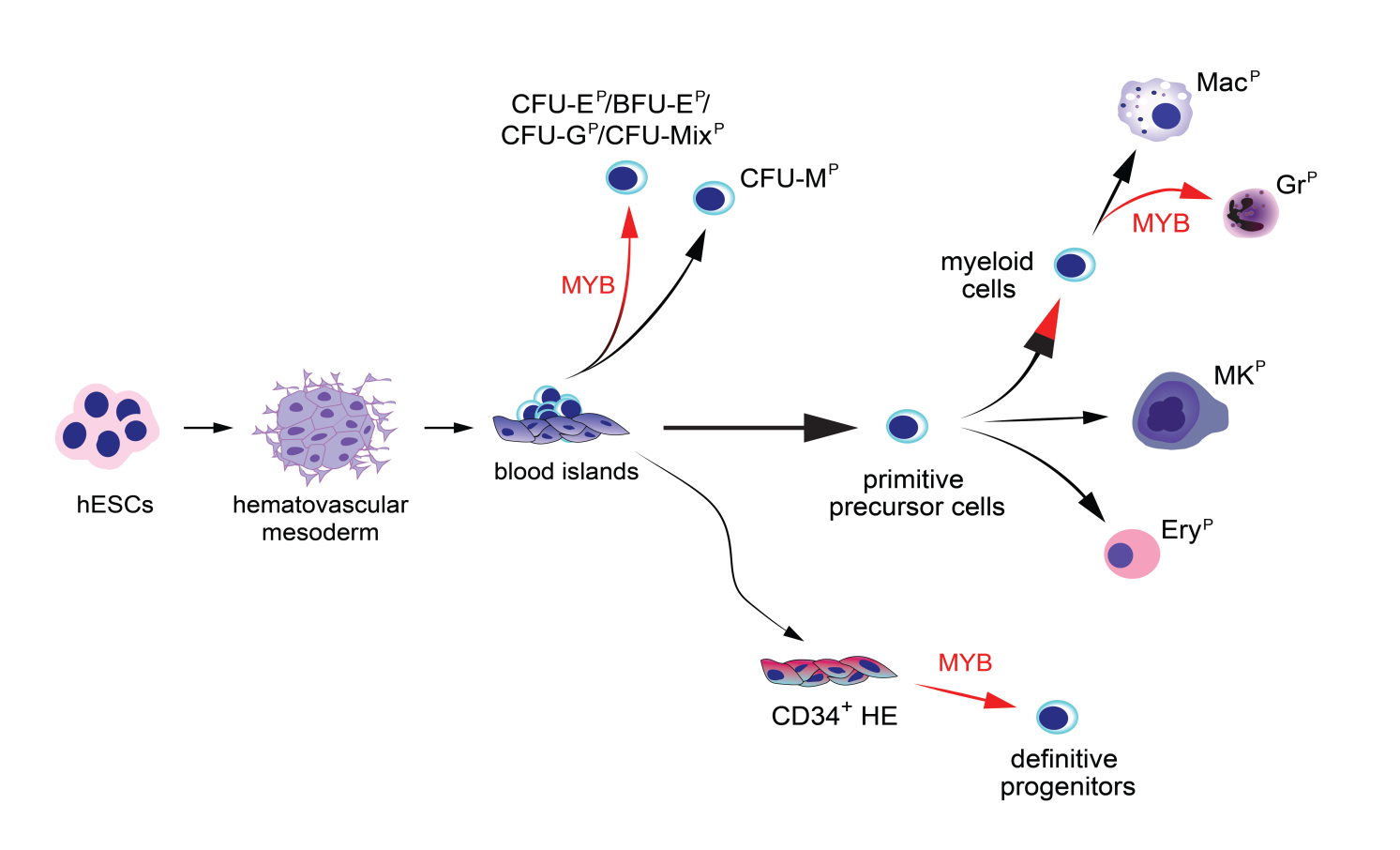Novel principles of blood cell emergence in humans are revealed
Source:GIBH | Release time:2020-08-27
Source:GIBH | Release time:2020-08-27 | 【Print】 【Close】
Laboratory of Prof. Igor Samokhvalov has recently published in Haematologica (Haematologica; doi:10.3324/haematol.2020.249193) the article“MYB bi-allelic targeting abrogates primitive clonogenic progenitors while the emergence of primitive blood cells is not affected” Shah et al. Using a complex TALEN-mediated gene editing the authors inserted a fluorescent reporter and biallelically inactivated MYB gene in human ESCs. For comparing hematopoietic development of the WT and mutant hESC lines, they used an extremely efficient, versatile, and reproducible original protocol which the cells were differentiated in defined culture condition without addition of any hematopoietic cytokines. The differentiation protocol is highly recapitulative i.e. it mimics the actual development in human embryo.
It turned out that MYB was essential for the development of the primitive hematopoietic progenitors while early human blood cell emerged normally in the absence of MYB. These data unequivocally demonstrated that early human blood cells do not require hematopoietic progenitors for their development. The authors showed that the large numbers of blood cells emerge directly from hemogenic endothelium during an EHT-like process called the endothelial-to-hematopoietic transition (EHT). It was discovered that a whole early blood cell lineage originates by the EHT without participation of clonogenic progenitors. Thus, the early human blood cells and primitive hematopoietic progenitors were shown to represent two separate cell lineages (see the scheme below). Another important result of this study was finding the role of MYB in primitive human hematopoiesis. Before this publication, MYB was widely regarded as a transcription factor working exclusively in the definitive hematopoiesis. The discovery of Shahet al. has crucial ramifications for the whole field of human developmental hematology because it shows the limitations of small organisms as faithful models for hematological studies in humans.
The work effectively destroyed at least two long-standing dogmas in developmental hematology, and this was the reason that these pivotal discoveries failed to become published in leading high-impact international journals. Nevertheless, the story of this publication confirms the major rule for all scientists: “it is not important where you publish, it is important what you publish”.

Novel principles of blood cell emergence in humans are revealed